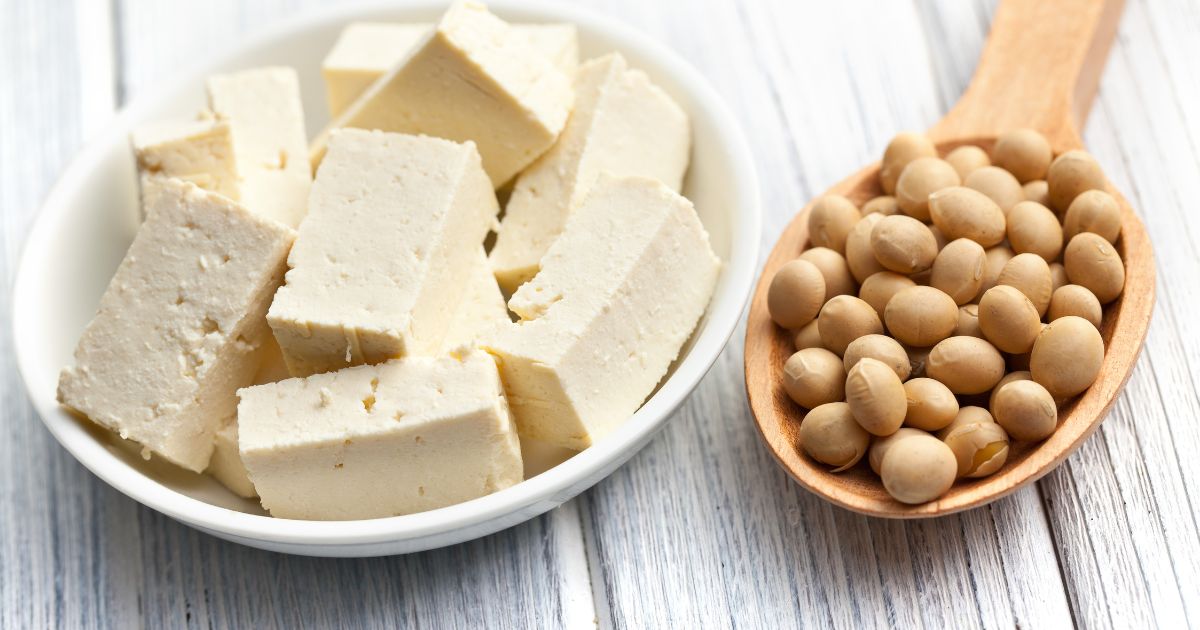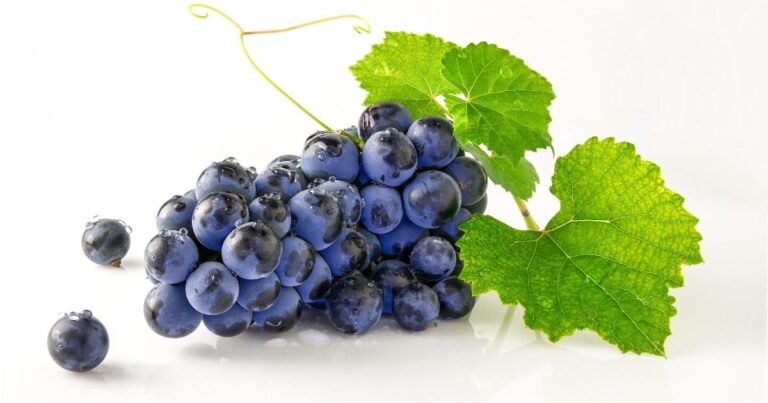From Extra Firm Tofu Taste To Silken Tofu Texture: Guide To Tofu
So You’ve decided to leap into the world of tofu, but before you take your first bite, you might wonder, “What does Tofu Taste Like?”. The texture and flavor profile of tofu are too unique not to need an explanation. You might also be a Tofu connoisseur who has yet to put their taste buds to the test in discovering precisely what that flavor is or a Tofu beginner who needs an easy-to-digest guide with a simple recipe. Either way, you’ve come to the right place.

If you’re here, you probably wonder, “What does tofu taste like?” It’s a question as old as tofu itself, which, by the way, has been around for centuries.
Imagine tofu as a spongy texture, but it soaks up flavors instead of water. Depending on whom you ask, its taste is often described as mild, slightly nutty, or even bean-like. But don’t let its initial subtlety fool you; this is where the fun begins.
This quality makes it a beloved ingredient in culinary traditions worldwide, from the bustling street food stalls of East Asia to the health-conscious kitchens of the West. But if you’re expecting a fireworks display of flavor from plain tofu, you might be left scratching your head.
Let’s clarify: Tofu’s magic doesn’t come from its unadorned state. The real enchantment lies in its transformation.
From the silken whispers of soft tofu in a comforting soup to the hearty shout of super firm tofu in a sizzling pan-fry tofu, it’s a food that promises endless tofu recipes.
Imagine a food so humble that it can swing from the starring role in a savory pan-frying tofu recipe to a discreet cameo in a smooth, decadent dessert.
That’s tofu for you. Its taste? Subtly nutty, with a hint of earthiness, a backdrop that welcomes bold sauces and spices. But it’s tofu’s texture that’s the real game-changer.
From silky and soft to satisfyingly chewy, tofu can be anything you want it to be.
Now, let’s dive deeper into what sets apart the silken from the extra firm and how each type of tofu can be your culinary playground. Get ready to discover the rich tapestry of flavors and textures that tofu brings to the table.
Table of Contents
What Does Tofu Taste Like?
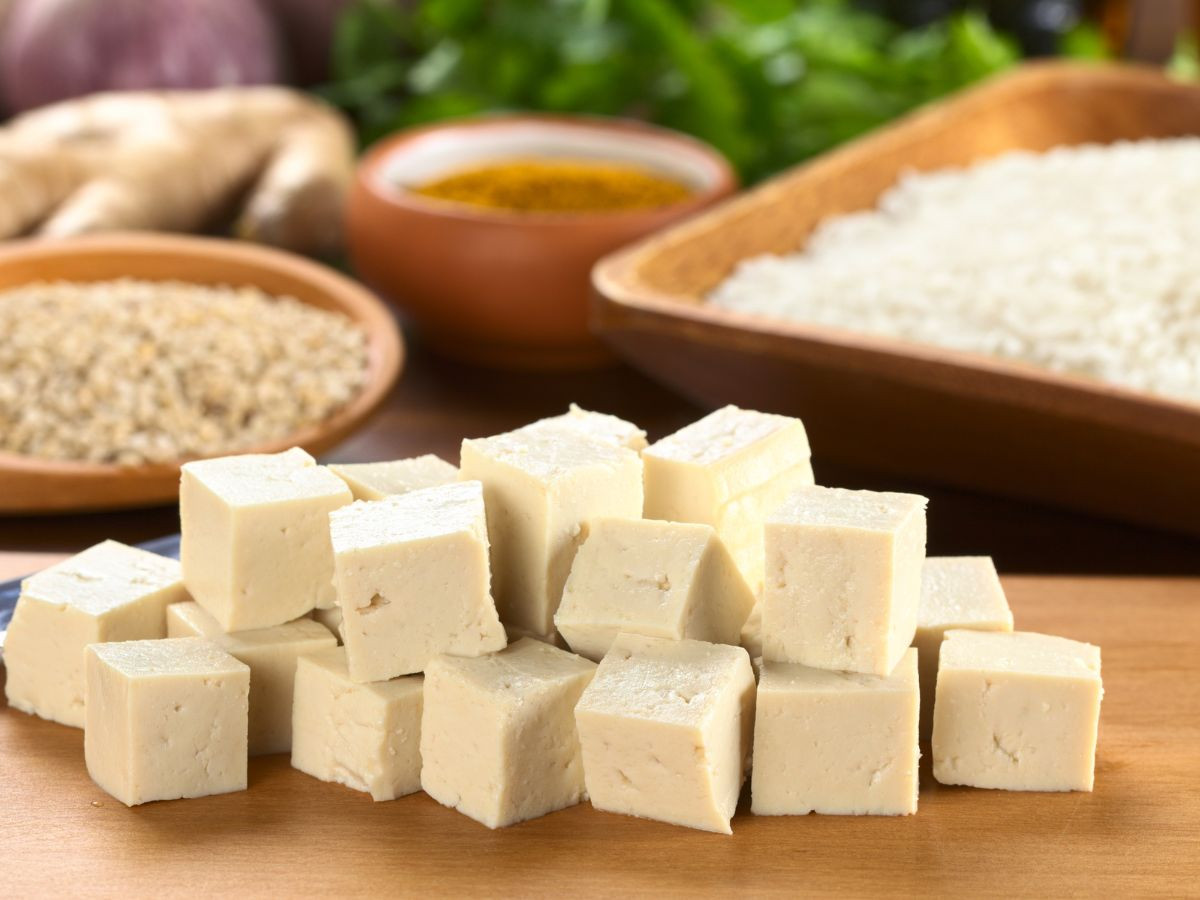
Whether you’re a tofu skeptic or a seasoned tofu lover aficionado, join me on this flavorful journey that promises to demystify the enigmatic block of soy and perhaps inspire your next kitchen masterpiece.
The Subtle Art of Tofu’s Flavor

Tofu’s flavor is a canvas, awaiting the brushstrokes of your culinary creativity. At its core, tofu has a subtly sweet, nutty baseline reminiscent of the mild beans from which it originates. Yet, it’s the texture that often dictates the taste experience. Let’s break it down:
Extra Firm Tofu: The Bold and the Beautiful

Texture: Dense, chewy, and ready to stand its ground. Think of the satisfying bite of a well-cooked chicken breast but plant-based.
Flavor Carrier: Its robust structure makes it a champion of marinades and sauces. After a good soak, it can carry flavors as complex as a smoky barbecue glaze or as simple as a zesty lemon-herb dressing.
Best Uses: Grilled, pan-fried tofu or thrown into a hearty veggie stir-fry. The medium-block tofu refuses to get lost in the mix, maintaining its texture and flavor integrity.
Silken Tofu: The Delicate Delight

Texture: Smooth, creamy, almost ethereal. It’s the gentle caress compared to the extra firm’s hearty handshake.
Flavor Carrier: Soft Silken tofu adds a creamy texture rather than a dessert alternative to flavor. However, it beautifully adopts the subtleties of light sauces and dressings.
Best Uses: Soft block tofu is Perfect in soups, smoothies, dips, or as a dairy-free dessert alternative. It melds seamlessly, offering a luxurious mouthfeel.
The Taste Test: A Personal Experiment
Imagine taking a tiny cube of each tofu type before you season tofu, and it’s untouched by spices like garlic powder or marinades. The extra firm might remind you of a mild, unsalted paneer with a hint of earthiness. On the other hand, Silken tofu might recall a delicate custard with a whisper of soy that dances on the tongue.
But here’s where the magic happens: introduce raw tofu to a flavorful marinade or a rich sauce. The transformation is not just remarkable; it’s a revelation. The extra firm tofu taste transforms into a savory bite, bursting with the flavors it has absorbed, while the silken variety turns into a smooth, comforting presence that enhances the overall dish without overpowering it.
Through these experiences, it becomes clear: when eaten raw, tofu’s taste isn’t just about the initial bite but the journey it takes through the flavors you pair it with. Whether dressing it up for a main course or subtly incorporating it into a dessert, try to cook tofu, which is your culinary tabula rasa, waiting to be painted with the flavors of your choice.
Tofu Textures: A Culinary Guide
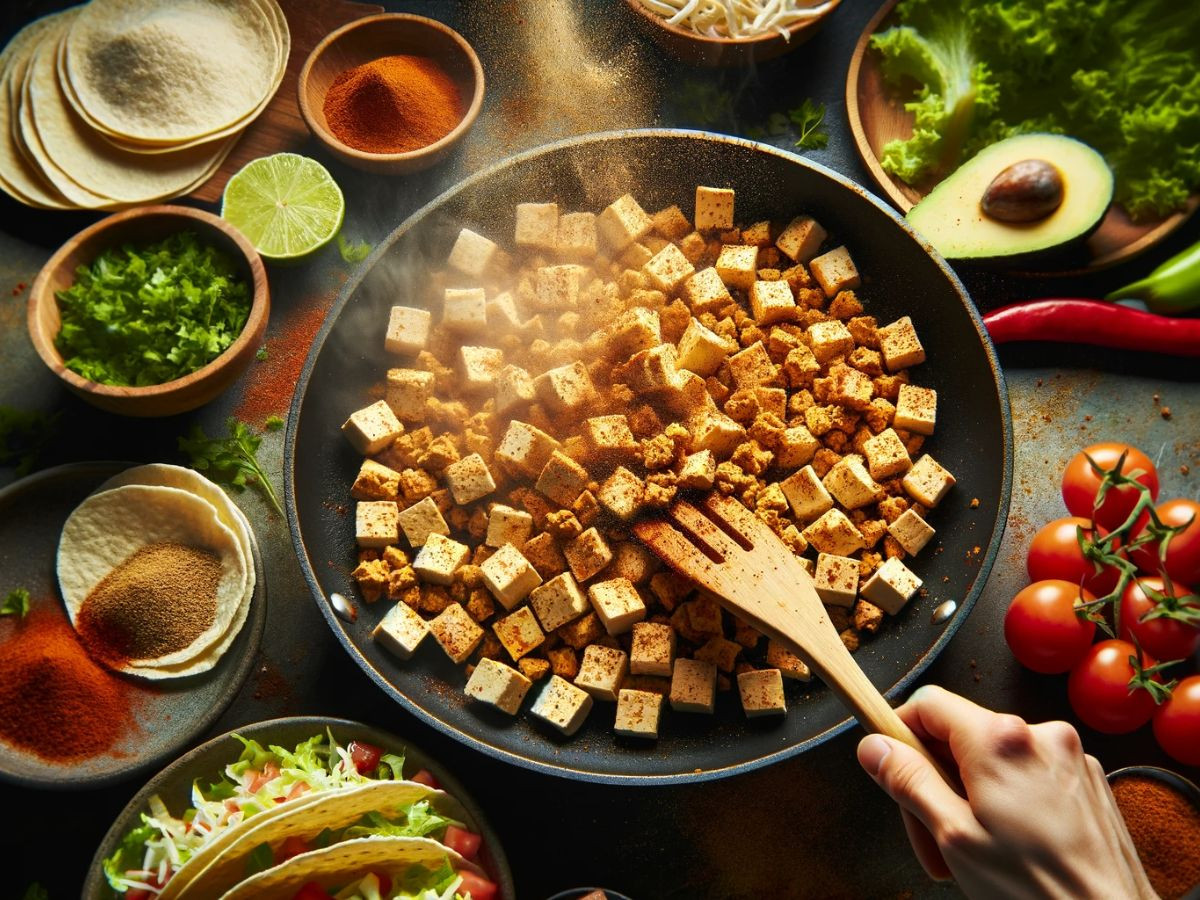
Navigating the world of tofu textures can be akin to exploring a new city with unique neighborhoods, each offering charm and character. Understanding these textures enhances your cooking and elevates your dining experience.
Firm and Extra Firm Tofu: The Sturdy Staples
Characteristics: Dense, able to hold its shape, with a satisfying chew.
Kitchen Tips: Pressing is your friend here. Removing excess moisture and soy milk allows for a crisper exterior when cooked. Slice, cube, or crumble it based on your dish’s needs.
Ideal For: Stir-fries, kebabs, scrambles, and anything that requires tofu to maintain its integrity under the heat of cooking.
Medium Tofu: The Versatile Middle Ground
Characteristics: Softer than firm tofu but holds more shape than silken. It has a balanced moisture content that offers both softness and slight firmness.
Kitchen Tips: Medium tofu is great for lightly frying or adding to dishes where a tender yet slightly firm texture is desired. It’s excellent in soups, where it retains some bite.
Ideal For: Soups, light pan-frying, or gentle sautéing. It’s also a good choice for dishes with a softer texture without disintegrating.
Silken Tofu: The Silky Smooth Operator
Characteristics: Creamy and smooth with a high water content. It’s delicate and can fall apart if not handled gently.
Kitchen Tips: There’s no need to press silken tofu; it’s all about embracing its moisture. Blend it into smooth, creamy sauces, dressings, or desserts.
Ideal For: Soups (like the Japanese miso), smoothies, dips, and as a dairy substitute in baking and dessert recipes.
Navigating Textures:
Experiment: The best way to understand tofu’s versatility is to experiment with different textures in various dishes. Notice how the texture influences the dish’s overall feel and flavor absorption.
Marinate: Regardless of texture, marinating can elevate the way tofu tastes. Even a quick 30-minute soak can make a significant difference.
Cooking Methods: Experiment with baking, frying, steaming, or blending tofu. Each method interacts differently with tofu’s texture, offering unique outcomes.
Understanding the nuances of tofu textures empowers you in the kitchen and opens up a world of culinary possibilities.
Whether you want to marinate tofu with smoked paprika for a smoky barbecue dish like tofu tacos or blend silken tofu into a velvety chocolate mousse, the key is to embrace and play with these textures.
With each tofu type serving a distinct purpose, your culinary adventures with this soy-based staple are limited only by your imagination.
The Rich Tapestry of Tofu: History, Health, and Variations
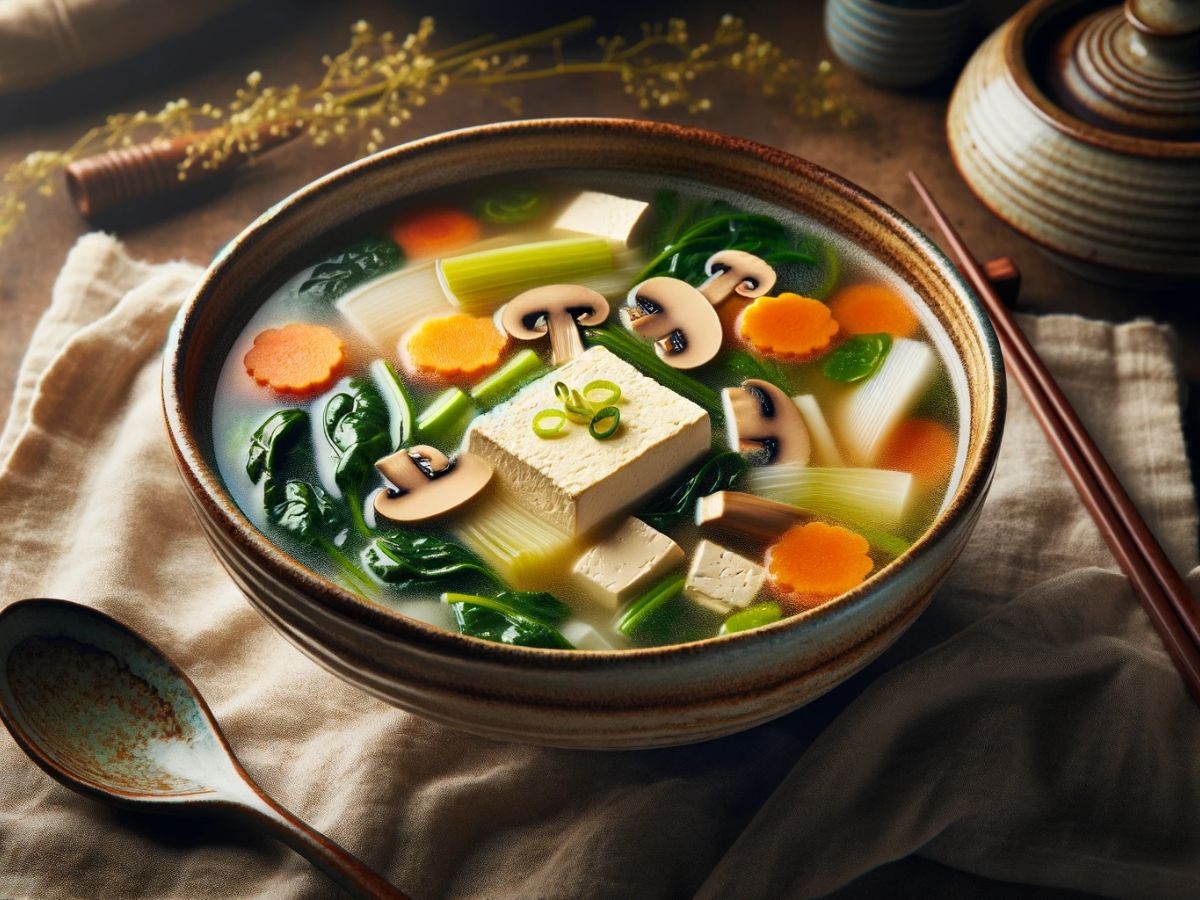
Tofu, much more than a mere ingredient, carries with it centuries of history, a wealth of health benefits, and a delightful array of variations that cater to every palate and culinary requirement.
A Brief Foray into Tofu’s History
Tofu’s journey began in ancient China, with its invention attributed to the Han dynasty. It spread across Asia, becoming a cornerstone of the culinary landscape in countries like Japan, Korea, and Vietnam.
Each culture adopted tofu, infusing it with local flavors and traditions, thus enriching its culinary diversity. Tofu’s introduction to the Western world was much later, where it found a foothold among vegetarian and health-conscious communities before making its way into mainstream cuisine.
The Health Benefits of Tofu
Tofu isn’t just versatile in the kitchen; it’s also a powerhouse of nutritional benefits. Here’s why it’s celebrated in diets around the world:
Protein-Rich: Tofu is an excellent source of complete protein, containing all nine essential amino acids, making it a crucial component of vegetarian and vegan diets.
Minerals and Vitamins: It’s rich in iron, calcium, and magnesium, among other minerals, as well as vitamins, particularly B vitamins.
Heart Health: Regular tofu consumption has been linked to improved heart health, thanks to its ability to lower bad cholesterol levels.
Weight Management: Low in calories but high in protein, tofu can help in weight management and satiety, making it a favorite among those looking to maintain or lose weight healthily.
Bone Health: The calcium and magnesium in tofu support bone health, making it a beneficial food as we age.
Tofu Variations: A Spectrum of Textures and Flavors
Tofu comes in various textures, from silken to extra firm, but the variations don’t stop there. Here are a few more to explore:
Smoked Tofu: Infused with a smoky flavor, it adds a robust depth to dishes.
Marinated Tofu: Pre-flavored tofu that can save time and make your cooking convenient.
Tofu Skins: These are great for wraps and rolls, created from the skin that forms on boiling soy milk.
Fermented Tofu: It is a condiment in Chinese cuisine and offers an intense, cheese-like flavor.
Bringing Tofu to Your Table
Understanding tofu’s rich history, health benefits, and the variety of available variations can transform how you view this humble soy product.
Whether you’re using silken tofu to create a smooth dessert, marinating extra firm tofu for a savory stir-fry, or exploring the unique flavors of fermented tofu, there’s no doubt that tofu is a versatile and nutritious addition to any meal.
How do you make tofu taste good? Cooking Perfection

Cooking with tofu might seem daunting initially, but with a few chef-approved tips and tricks, you’ll soon find yourself handling it like a pro, ready to impress with dishes that showcase tofu in all its glory. Here’s how to get the best out of tofu, ensuring delicious outcomes every time:
The Art of Pressing Tofu
Why Press?: Pressing removes excess water from tofu, improving its texture and ability for flavor absorption.
How to Press: Wrap your block of tofu in a clean kitchen towel or paper towel, place it on a plate, and set a heavy object (like a cast-iron skillet) on top. Leave it for at least 30 minutes or longer if you have time.
Marinating: Flavor Infusion
Deep Flavor: Tofu’s mild taste makes it a perfect marinade canvas. The longer you marinate, the deeper the flavor.
Marinade Ideas: Use a mixture of soy sauce, garlic, ginger, and sesame oil for an Asian flair, or go with lemon juice, olive oil, and herbs for a Mediterranean touch.
Cooking Techniques: A Spectrum of Textures
Pan-frying/Sautéing: This method is excellent for achieving a crispy exterior while keeping the interior soft. Ideal for firm and extra-firm tofu.
Baking: Baked tofu offers a chewy texture and is a healthier alternative to frying. It’s fantastic for adding to salads or as a protein-packed snack.
Grilling: Grilled tofu gets a beautiful char and a smoky flavor, perfect for summer BBQs. Make sure to use extra firm tofu for this.
Blending: Silken tofu blends smoothly into sauces, smoothies, and desserts, adding creaminess without overpowering other flavors.
Achieving the Perfect Crisp
Cornstarch is Key: For that irresistibly crispy tofu, toss your pressed and marinated firm block tofu cubes in cornstarch before frying.
High Heat: Don’t be afraid to turn up the heat. High heat ensures a crispy golden brown exterior while keeping the interior tender.
A Quick and Tasty Tofu Recipe: The Ultimate Tofu Stir-Fry
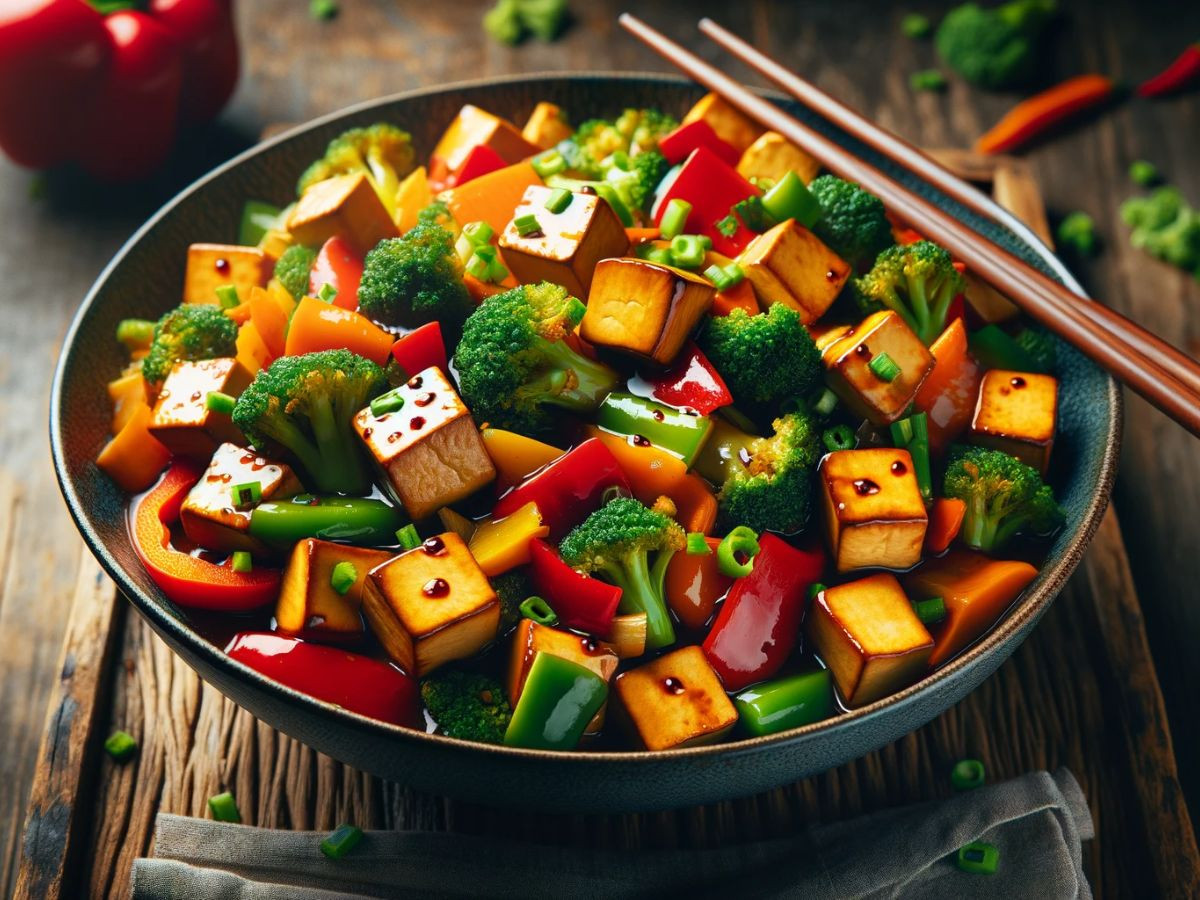
Ingredients
1 block extra firm tofu, pressed and cubed
3 tablespoons soy sauce
1 tablespoon rice vinegar
1 tablespoon maple syrup or honey
2 teaspoons cornstarch, divided
2 tablespoons vegetable oil
Your choice of vegetables (e.g., bell peppers, broccoli, snap peas)
2 cloves garlic, minced
1 inch ginger, minced
Instructions
Marinate the Tofu: Combine 2 tablespoons soy sauce, rice vinegar, and maple syrup in a bowl. Add the tofu cubes and let marinate for at least 30 minutes.
Prepare the Sauce: Mix the remaining soy sauce with 1 teaspoon cornstarch and set aside.
Cornstarch Coating: Gently toss the tofu cubes with the remaining cornstarch after marinating.
Cook the Tofu: Heat 1 tablespoon of oil over medium-high heat. Add the tofu cubes and fry until golden on all sides. Remove and set aside.
Stir-Fry Veggies: In the same pan, add the remaining oil, garlic, and ginger. Sauté for a minute before adding the vegetables. Stir-fry until just tender.
Combine: Return the tofu to the pan with the vegetables. Add the sauce and stir well to combine. Cook until the sauce thickens.
This stir-fry showcases tofu’s ability to take center stage in a dish, proving that, with the proper techniques, tofu can be anything but bland.
Whether you’re new to tofu or looking to refine your skills, remember that cooking with tofu is as much about experimentation as it is about technique. Embrace the versatility of tofu and let it inspire creativity in your kitchen.
Conclusion: Embracing Tofu’s Culinary Possibilities

From its subtle taste and varied textures to its rich history and nutritional benefits, tofu offers a canvas for creativity in the kitchen. Whether you’re a seasoned chef or a curious home cook, the versatility of tofu allows you to explore a spectrum of flavors and dishes, making it a cherished staple in global cuisines.
So, What does tofu taste like?
It challenges you to think differently about flavor, texture, and nutrition, encouraging a more mindful and creative approach to cooking and eating. With the tips and techniques we’ve explored, you’re well-equipped to transform this simple soy product into dishes that delight and nourish.
Remember, the beauty of cooking with tofu lies in experimentation. Each type of tofu, from silken to extra firm, invites you to play with its unique properties in a savory stir-fry, a creamy dessert, or a protein-packed snack.
Tofu is more than just an ingredient; it’s a testament to the innovation and adaptability of human cuisine. Its ability to absorb flavors and transform in texture makes it a true culinary chameleon that can cater to a wide range of dietary preferences and nutritional needs.
Tofu is a versatile and satisfying choice whether you’re crafting a meal for a health-conscious friend, a vegetarian family member, or simply looking to add more plant-based options to your diet.
In conclusion, the world of tofu is rich with flavors, textures, and possibilities. It invites us to explore, experiment, and enjoy the art of cooking in new and exciting ways.
So, take what you’ve learned, get creative in the kitchen, and let tofu be the star of your next culinary adventure. Here’s to many delicious discoveries ahead!
FAQ and Additional Information
Does Tofu Taste Like Meat?
Tofu itself does not naturally taste like meat. Its inherent flavor is mild, slightly nutty, and somewhat bland, a far cry from most meats’ savory, umami-rich taste profile.
However, the charm lies in its versatility and exceptional ability to absorb flavors from marinades, spices, and cooking methods when correctly seasoned and cooked, tofu can mimic various meats’ textures and flavor profiles, making it a popular choice in vegetarian and vegan dishes intended to replicate meaty classics.
For instance, when marinated in a rich blend of soy sauce, liquid smoke, and other seasonings, tofu can take on a smoky, umami flavor reminiscent of grilled meats.
Its texture, especially in the case of extra firm tofu, can be manipulated through cooking techniques like frying, baking, or grilling to achieve a chewiness similar to certain types of meat. Additionally, tofu can be crumbled and seasoned to mimic ground meat in dishes like tacos, spaghetti sauce, or chili.
While tofu can be prepared in ways that resemble the taste and texture of meat, especially with the right seasonings and cooking methods, it’s important to appreciate tofu for its unique qualities.
Its ability to serve as a canvas for flavors and its nutritional profile makes it a valuable and versatile ingredient in its own right, beyond just being a meat substitute.
Is Tofu An Acquired Taste?
For many people, tofu can indeed be an acquired taste. Its initial mild, somewhat bland flavor and unique texture vary significantly from the more familiar tastes and textures of animal-based proteins or other plant-based foods.
The appreciation for tofu often grows with exposure, especially as one becomes more experienced with different methods of preparation and seasoning that can enhance its flavor and texture.
Several factors contribute to tofu being an acquired taste:
Cultural Familiarity:
In cultures where tofu has been a staple food for centuries, such as in many Asian countries, it is generally not considered an acquired taste. People grow up eating tofu in various dishes, so its texture and flavor are familiar from a young age. Conversely, in cultures where tofu is less common, individuals might need time to appreciate its qualities.
Texture:
Tofu comes in several textures, from silken to extra firm, and the texture can significantly affect how it’s perceived. Some may initially find silken tofu’s creamy, smooth texture challenging, while others might prefer it over the chewier texture of firmer varieties.
Flavor Absorption:
Understanding and appreciating tofu’s ability to absorb and enhance flavors can be a turning point for many. Initially, the blandness of tofu can be off-putting to some; however, learning to marinate, season, and cook it properly can transform it into a delicious and versatile ingredient.
Health and Dietary Choices:
For those transitioning to vegetarian or vegan diets, tofu can be an essential source of protein. The motivation to incorporate tofu for its health benefits can lead to an acquired taste as individuals explore creative ways to prepare it.
Cooking Techniques:
Exposure to different cooking techniques that improve tofu’s texture and flavor can make a significant difference. For example, pan-frying, grilling, or baking tofu can create a delightful, crispy exterior and a flavorful dish that may appeal more to those initially skeptical.

